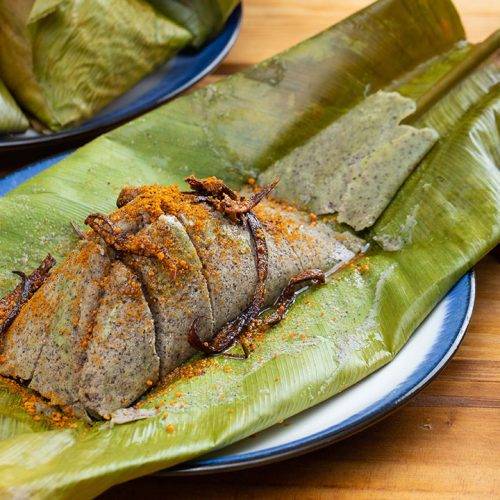Tubani, a delicious Ghanaian dish, captures the essence of the art and flavors of traditional cuisine. Rooted in West African cuisine, this delicacy is testament to the country's rich cultural heritage and culinary diversity. The preparation of Tubaani is an art that involves a careful balance of ingredients, techniques and a deep understanding of the local culture.
The foundation of Tubaani lies in its basic components:
beans and corn. Black-eyed peas are the most commonly used beans, chosen for their soft texture and earthy flavor. The corn provides a hint of sweetness, a nice addition to the beans. Soak beans overnight to soften, easier to cook. This step also helps to reduce cooking time and improve the digestibility of the dish.
The process begins with thoroughly washing the soaked beans and corn to remove all impurities. The beans are then coarsely ground, traditionally using a large wooden mortar and pestle. This arduous task requires patience and effort, but it is essential to achieve the desired consistency. The coarsely ground mixture is then combined, creating a harmonious blend of beans and corn.
This mixture is then mixed with finely chopped onions, fresh ginger and red peppers, giving the dish a lively flavor blend. Spices are not only important for taste but also have cultural significance as they reflect the bold and spicy nature of Ghanaian cuisine.
After mixing the spices well, the mixture is molded into balls or patties and gently fried until golden brown. The sizzling sound of Tubaani cooking in hot oil is a symphony that resonates with memories of gatherings and celebrations. The final product has a crispy outside, and soft and tender inside, creating a delicious contrast between the textures.
Tubaani is often enjoyed with many different sides, showing the versatility of the dish. It can be served with a tangy tomato-based sauce, which adds a refreshing sourness and pops of color. Some people also enjoy it in combination with fried bananas, creating a harmonious balance of flavors between the sweet and savory elements. In rural areas, Tubaani is sometimes enjoyed with a spicy pepper sauce or generous amounts of homemade yogurt, adding layers of flavor and richness.
In addition to its appealing taste, Tubaani holds a special place in Ghanaian culture. It is a dish that binds people together, often served at community gatherings, festivals, and family celebrations. The act of preparing Tubaani is a labor of love, a tradition passed down from generation to generation, preserving the culinary heritage of the region.
To sum up, the art of Tubaani preparation in Ghana reflects the country's deep cultural values and culinary excellence. From the meticulous preparation of beans and corn to the careful mixing of spices, every step of the process contributes to creating a dish that embodies the heart and soul of Ghana. Tubaani is more than just a meal; it's a connection to history, a tribute to tradition, and a testament to the power of food in bringing people together.


